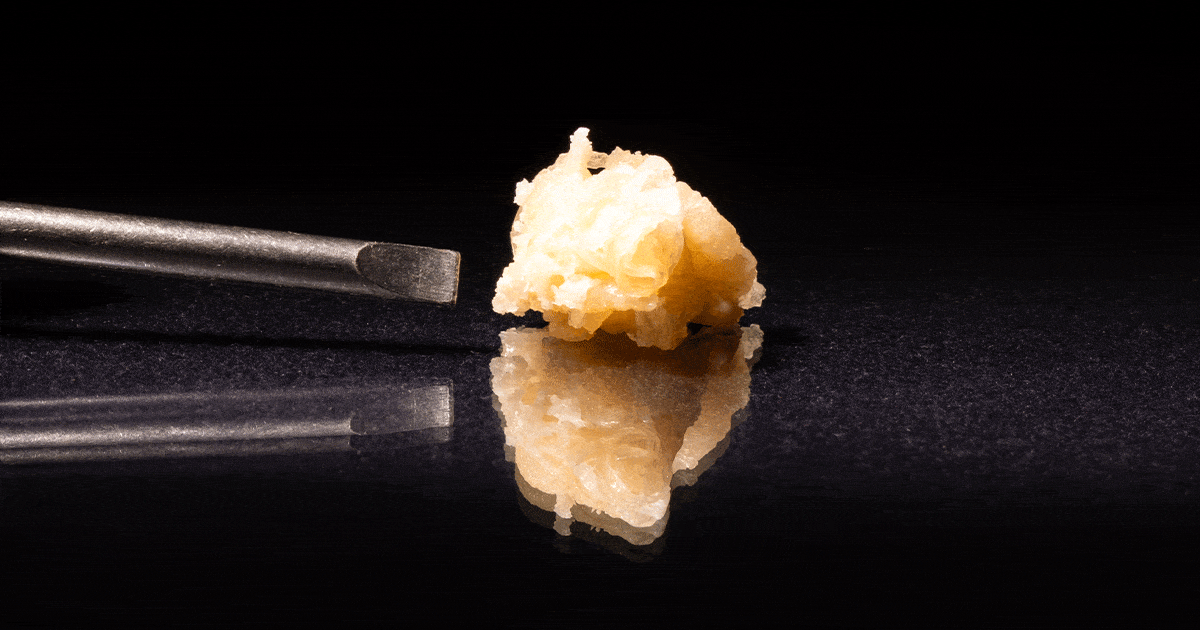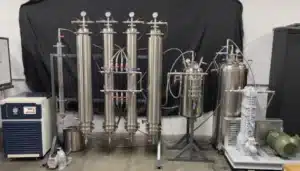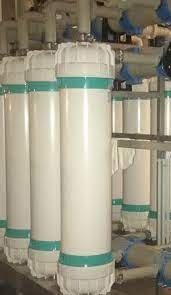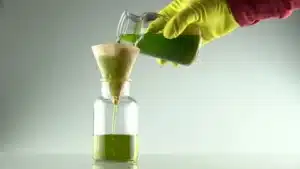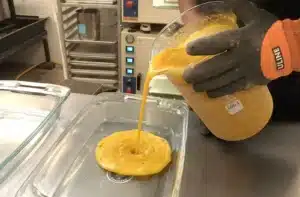With the evolution of cannabis extraction technology, many innovative products are becoming popular. Propane hash oil is a potent cannabis extract, allowing producers to create products that appeal to consumers looking for richer terpene profiles.
How exactly does the PHO extraction method work?
That’s what we will explore in this detailed guide on PHO extraction.
Sections
ToggleWhat is PHO Extraction?

The PHO extraction method uses propane as the primary solvent for extracting cannabinoids and preserving the terpene profile. It uses a closed-loop system, which makes this extraction method efficient for commercial operations.
Compared to other concentrates:
- BHO (Butane Hash Oil) is produced at higher temperatures, which can degrade more sensitive terpenes than PHO.
- CO₂ extraction while preserving the same terpene profile requires significantly higher pressure.
- Rosin is a solventless extract, but the process has lower yields.
Common Methods of PHO Extraction

- Standard PHO Extraction Using Closed-Loop Systems
The commercial PHO extraction method uses specialized closed-loop equipment to produce products. This method is preferred because it minimizes propane wastage and exposure risks while maximizing extraction efficiency.
- Dewaxed PHO Extraction
This method has another step called winterization to remove wax and lipids from PHO. The extract is cooled to sub-zero temperatures, causing waxes and lipids to solidify.
- PHO Extraction with Blended Solvents
To achieve some specific cannabinoid profile in extracts, some processors blend propane with butane. The solvent blend balances propane’s lower boiling point with butane’s higher solvency.
- PHO Extraction for “Live Resin”
Propane extraction can create high terpene profile live resin from fresh-frozen cannabis rather than dried material. It helps get a higher yield while capturing the original strain’s authentic essence and flavor profile.
- Post-Processing Variants
After PHO extraction, further post-processing can be involved to produce variants. Finishing techniques like whipping, mechanical separation, and controlled temperature curing can create budder, sauce, butter, and diamonds.
How PHO Extraction Works: Step-by-Step Process
- Preparation
- Cannabis plant material is dried, cured, and ground to increase surface area for more efficient extraction
- Closed-loop system is thoroughly cleaned, pressure-tested, and setup
- Extraction Phase
- Liquid propane is cooled and fed into the material column containing the cannabis
- Propane dissolves the cannabinoids and terpenes
- Separation and Purging
- Propane/extract solution is separated from the plant material through filtration
- The filtered mixture is then purged of propane using a vacuum oven while preserving temperature-sensitive compounds
- Post-processing
- Depending on the end product, PHO may undergo further refinements, such as dewaxing, decarboxylation, or crystallization
- The final product is tested for residual solvents, potency, and contaminants
Key Equipment Used in PHO Extraction
- Closed-loop extraction systems

These are specially designed equipment that contain propane throughout the extraction process. They allow the recovery and reuse of propane for multiple extraction cycles.
- Vacuum ovens

Image Courtesy: beinglab-usa.com
Precision temperature-controlled ovens create negative pressure environments to remove residual solvents from the extract efficiently.
- Recovery tanks

Image Courtesy: www.lab.fr
These are specially designed vessels to capture and condense propane gas safely. They allow propane to turn into liquid form for reuse.
- Safety gear

Image Courtesy: masscannabiscontrol.com
Propane is a hydrocarbon solvent, so PHO extraction must always be done using essential protective equipment. This includes explosion-proof ventilation, gas detection systems, fire suppression technology, and personal protective equipment.
- Filtration and dewaxing units

Image Courtesy: www.shutterstock.com
Equipment like inline filters, winterization columns, and micron screens are needed to remove unwanted contaminants like lipids and wax from propane hash oil.
Comparison with BHO and Other Extraction Methods
PHO vs. BHO
- Propane hash oil retains more volatile terpenes due to its lower boiling point (-44°F) as compared to butane (31°F)
- PHO extraction method is faster as purging propane is quicker than butane, reducing processing time
- PHO is a more budder-like consistency, while BHO produces a shatter-like extract
Click Here to know more about PHO vs. BHO
PHO vs. CO₂ Extraction
- The PHO extraction method is less expensive than CO2 extraction due to lower equipment cost
- Propane can capture a more versatile terpene profile than CO2
- CO2 extraction method is safer as CO2 is non-flammable, whereas propane is flammable
PHO vs. Rosin
- Propane extraction has a much higher yield than mechanical rosin pressing
- Rosin is a solventless method without any risk of residual solvents present in PHO
- PHO can be scaled commercially compared to rosin, which is more labor-intensive and has a low yield
Benefits of PHO Extraction
1. Higher terpene retention
Due to the low boiling point of propane (-44°F), the PHO extraction method preserves more temperature-sensitive terpenes, offering more complex aromatic profiles.
2. Cleaner flavor profile
Propane hash oil has a more flavorful profile because propane extracts fewer plant waxes, chlorophyll, and lipids that can hamper the taste.
3. Faster extraction and purging
Due to the low-temperature boiling point, the PHO extraction method offers quicker processing time and purging.
4. Potentially safer than BHO
Propane has a distinctive odor and less flammability than butane, making the PHO extraction method safer than butane extraction.
Safety Guidelines for PHO Extraction
Handling Propane
- Propane is highly flammable, making safe storage mandatory to avoid explosion risks
- Always use propane rated for laboratory or food-grade extraction, never standard fuel grades
Closed-Loop Systems
- Closed-loop equipment must be regularly inspected and undergo pressure testing for safety
- Implement regular maintenance schedules and document all system checks before each extraction run
Operator Training and SOPs
- Ensure staff handling equipment and processes receive comprehensive training
- Strictly adhere to detailed standard operating procedures to ensure the safety of the staff and facility
Compliance and Regulations
- For PHO extraction, permits, and licenses may be required
- All facilities must meet C1D1 (Class 1 Division 1) requirements for handling flammable materials
Common Mistakes and How to Avoid Them
1. Inadequate purging
Insufficient propane purging can leave residue solvent, which is potentially harmful if consumed.
2. Improper temperature control
Excessive heat during the PHO extraction process can degrade valuable terpenes and cannabinoids.
3. Low-quality biomass
Low-quality plant material will produce mediocre potency and taste of cannabinoid extracts regardless of technique quality.
4. Ignoring safety measures
Any leniency with safety protocols can result in catastrophic accidents such as explosions, fires, and serious injuries.
Who Should Consider PHO Extraction?
The PHO extraction method is a commercially successful technique ideal for large-volume production. However, the facilities, training, and specialized equipment require significant capital investment. Producers with manufacturing facilities with C1D1-rated environments, professional staff, and proper permitting can produce premium concentrates at scale, setting their products apart in the market.
Conclusion
The PHO extraction method is excellent for commercial operations. It offers terpene preservation and processing efficiency advantages, allowing for sustainable large-scale operations. However, it can require a high initial investment and compliance. If you are looking for a method for producing exceptional concentrates with unique properties to stand out in a competitive market, PHO extraction can be the solution.

